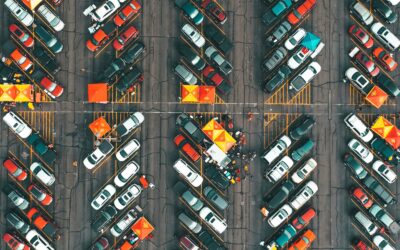On I-75/85, I-285, and at Spaghetti Junction, one hard brake in rain or stop-and-go traffic can cascade into a chain-reaction crash. These multi-vehicle collisions look chaotic—multiple impacts, different stories, and cars pushed into other cars—but Georgia still assigns fault based on negligence. The steps you take in the first 24–48 hours can make the difference between insurers pointing fingers and you getting full value for your injuries.
Why pileups are different (and harder)
Unlike a simple rear-end, a pileup often has several impact points, disputed timelines, and multiple insurers. One driver may have followed too closely; another may have been speeding or distracted; a third may have been shoved forward by a truck. Commercial vehicles introduce federal rules, electronic logs, and higher policy limits. Proving what happened requires fast evidence work before footage is overwritten and vehicles are repaired.
What to do right away after a multi-car crash
- Call 911 and get checked out. Concussions, neck/back injuries, and shoulder or knee damage can surface hours later. Early records tie symptoms to the wreck.
- Document positions and paths. Take wide photos of all vehicles, lane markings, debris fields, skid paths, and final rest positions. Then shoot close-ups of damage and license plates.
- Capture conditions. Note rain, glare, darkness, active construction, and signage. Photograph brake-light chains or blocked sightlines if you can do so safely.
- Identify all witnesses and cameras. Get names/numbers for drivers and bystanders. Look for dash cams, freeway cameras, and nearby business or traffic-management cameras; ask for preservation.
- Limit statements. Provide the basics to police and insurers. Don’t guess at speed or accept blame before you’ve reviewed the facts.
- Follow treatment plans. Keep every appointment; consistent care strengthens the medical proof of your Georgia claim.
How fault is proven in Georgia pileups
Georgia applies negligence and comparative fault. Investigators reconstruct sequence and spacing: sudden braking may be reasonable in congestion, but tailgating or distracted driving is not. Key proof includes:
- Event Data Recorder (EDR) downloads showing speed/braking just before impact.
- Dash-cam and traffic video confirming timing between impacts.
- Commercial-vehicle records (driver logs, telematics, maintenance) for trucks or vans.
- Scene physics (skid marks, crush damage, underride/override patterns) establishing who hit whom and when. Even if you were struck and then pushed into another vehicle, you can still recover from the drivers who caused the initial and subsequent impacts.
Insurance layers that can raise recovery
Multi-vehicle crashes often unlock multiple policies: the at-fault driver’s liability coverage, any commercial or employer policies (delivery vans, contractors, rideshare while on-app), and your own UM/UIM (uninsured/underinsured motorist) if a driver has minimal limits or flees. MedPay can help with early bills regardless of fault, and health insurance keeps treatment moving while liability is sorted.
Common injuries and losses we see
Whiplash and herniated discs from multiple jolts, concussions with headaches and light sensitivity, shoulder/knee injuries from bracing, wrist/hand fractures, and PTSD or driving anxiety. Claims can include ER and follow-up care, imaging, therapy, future medical needs, lost wages or reduced earning capacity, pain and suffering, and repair or total loss of your vehicle and damaged items (phones, laptops, car seats).
Mistakes that reduce case value
Leaving the scene without comprehensive photos, giving a recorded statement too early, gaps in treatment, social media posts minimizing injuries, and accepting quick lowball offers before the full medical picture is clear.
How Gunn Law Group builds a pileup case
We move fast with preservation letters for dash-cam, traffic, and business video; request EDR downloads; secure 911 audio and body-cam; and collect weather, lane-closure, and construction data for the time of the crash. We coordinate with your providers to document the full medical impact and map every liable party and policy so one driver’s minimal limits don’t cap your recovery. Then we negotiate from evidence, not guesses.
If a chain-reaction crash on the Connector or I-285 wrecked your week, don’t let insurers play pass-the-blame. Need a home run? Call the Big Gunn at 888-BIG-GUNN for a free case review.




